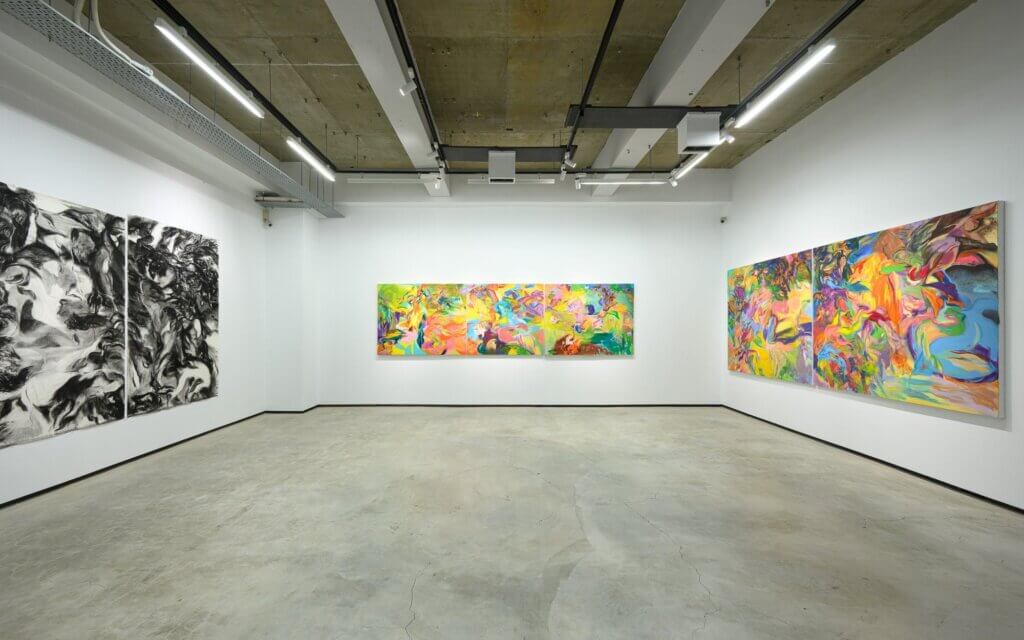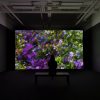Emily Wang: Tell Me a Story
2 October–13 November 2021
TKG+
2F, No. 15
Ln. 548, Ruiguang Road
Neihu District
Taipei, 114
Taiwan
To Emily Wang, the creative process is a constant negotiation between intuition and reason. It is a transformative process —engaging a visual energy and qualities of emotional tension through the dynamics of visual syntax, which in turn creates feeling and narrative. It is the unification of both the cognitive and sensate that makes the experience of visual discovery meaningful to her.
The quality of her work is therefore multilayered. On the one hand, this stems from her dual discipline in fine arts and philosophy; on the other, it has to do with her in-depth practice in multiple visual mediums including photography, drawing, and painting. The direction of her practice is also shaped by her upbringing and life experience as an outlander, a role she involuntarily inherited but later has become the perspective she adopts.

Her identity as a ‘neither-nor’ enables her compassionate understanding and insight into the underlying ideologies or assumptions of the various cultural and socio-political groups she encounters. This motivates her to go beyond the apparent dichotomy and strives for timeless value. With a keen eye and poetic empathy, Wang infuses her work with vitality by leveraging seemingly oxymoronic elements.
I wanted to paint light, but all I’ve drawn out is darkness
Emily Wang, Excavation (2021)
Wang defines herself as a colourist. The dynamic relations between colour and drawing underpin the ethos of her oeuvre. Through the vibrant dialogue composed of colours and gestural forms, and through her approach of all-over painting, Wang nurtures an intricate spatial tension across her canvas. The energy of each work is brought about by a constantly shifting correlation between the myriad of brushstrokes. As one’s gaze travels across the canvas, and with any changes in perspective and focal point, one experiences a simultaneous collision and coalescence of opposing energies. Through prolonged engagement in seeing, the multiplicity of narrative potentials unfolds gradually.
In her 2019 solo exhibition A Sense of Pleasure, Wang selected a series of abstract works from her decade-long endeavour of working from direct observation, including drawings and paintings, as well as photographic polyptychs of equally abstract quality. Her process began with constructing large-scale tabletop installation resembling an interior landscape that allows her an immersive experience throughout her creative process — from constructing it to visually engaging it, and painting from it. Swimming in the ocean of sensory experiences, her body becomes a highly perceptive vehicle that simultaneously takes on multiple roles as a beholder, a mediator, and the creator throughout the creative process. The triangular relationship was transformed on the canvas via brushstrokes — with each stroke setting in motion new sets of visual correlations and meaning.

In her latest solo exhibition Tell Me a Story at TKG+ Projects, the energetic exchange between ambivalent forces once again takes centre stage. In addition to painting, she also integrates poetry in her exploration of duality. Since the inception of the theme related to this exhibition, Wang began to experience a strong sense of poetic sound along with the ebb and flow of her inner experiences during her creative process. Incubated for years, the songs without words she experienced began to materialise in 2020 when she relocated to a small coastal town in eastern Taiwan.
The changeable sea is the grand theatre of nature’s dual force which resonates with the artist’s theme of exploration. Poetry came to her during her daily walk to the Pacific. Imageries and symbols in her poems infuse personal reflections and dream revelations of Venusian dual symbolisms, connecting personal perspective with the general theme of her exploration of duality. Similarly, through the suggestive power of colour relations, she combines observation and imagination in her painting process, and infuses visual discoveries made during her process with visions inspired by her dreams.
By colliding and coalescing two different mediums of expression, the exhibition space is transformed into an allegorical space to invoke a sense of mythical experience.
The drawing and the poem combination in the opening section engages the theme directly — the artist’s yearning for arcadia or eternity — through its absence. By pairing an unfinished drawing with a poem that only hints at the possibility of the archetypal Venusian being, the artist answers the title of her exhibition that the quest for a promised land has no end and is always unfolding.
The two large-scale double-sided paintings in the main exhibition area offers a new aspect of the tension between colour and drawing. Through serendipity, Wang adopts a new textile material as her canvas. Unexpectedly, some heavy paint strokes penetrated the surface and created a drawing imbued with the organic quality resembling cave-painting that is distinct from the visual quality and meaning of the painting in the front. Each backside drawing is then finished on-site to complete its dialogue with the painting in the front. The permeability and penetration of colour provides a new perspective on Wang’s oeuvre.
An artist changes the world not by physical force, but through the nurturing quality of her work. When reality becomes stranger than fiction, Wang seeks harmony and union of oppositions on a higher level. Just as the point of departure of the artist’s exploration of duality began with her yearning for arcadia, it was the dark imageries of Dante’s Inferno and the corruption of humanity that symbolise that Wang struggled to reconcile with — including her own shadows — throughout her creative process. Out of this dark process, Wang gave birth to artwork filled with vitality; each symbolises her spiritual rebirth. This is the best gift an artist can give to this world, and what the artist can contribute to the spiritual growth of the collective in the time of mania.
©2021 Emily Wang, TKG+, ANPIS FOTO





